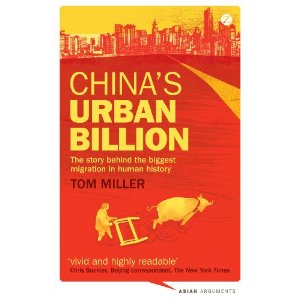China’s Urban Billion Extract – Tom Miller on Tianjin
Posted: November 18th, 2012 | No Comments »I can’t recommend Tom Miller’s China’s Urban Billion: The Story Behind the Biggest Migration in Human History enough. I have to confess it is the latest book in the series I edit for Zed Books in London, Asian Arguments, which means I get to commission books that answer questions that fascinate me. Tom has managed to produce an incredibly concise round up of the issues facing the urbanisation project in China and China’s urban population – established and new. Among the questions he answers that have intrigued me are :
- Why do so many Chinese cities look the same?
- Why is heritage and history so far down the urban planning agenda?
- Why have we yet seen problem estates/projects emerging in China’s cities?
- Who’s doing the planning, such as it is, and what are their priorities?
- Will the much reported “ghost cities” remain ghost cities or eventually fill up?
- What’s a typical Chinese city going to look like in the future?
Anyway, as a little teaser for Chinarhyming readers I’ve excerpted a small piece Tom has written on Tianjin – a city oft mentioned on this blog as a former treaty port – that may be of interest as it ties the old city to the new….though you really need to buy the entire book at its very reasonable price!
Tianjin: scrubbing up
Exiting Tianjin station used to be a dispiriting experience – like arriving in grimy Middlesbrough in northeast England or rundown Bridgeport in Connecticut, only worse. But thanks to a major city re- development scheme, all that has changed. The honking three-wheel taxis and hotel touts that used to assault visitors have disappeared. Instead, a giant piazza leads down to a riverside boardwalk lined with landscaped gardens and colonial architecture. Whisper it, but China’s fourth city is almost nice.
Tianjin’s history as a treaty port, in which successive European powers and Japan built self-contained concessions, always gave it tourist potential. But until the late 2000s, the city’s fine colonial buildings lay neglected, as it did its best to forget its humiliating past. Tianjin remained famous across China for its local steamed buns, sweet twisted dough sticks and stand-up comedians. But few people wanted to visit this large, grimy, polluted city.
The transformation over the past few years has been remarkable. The focus is the Hai river, which runs through the centre of the city. The city government has renovated the fine array of Western build- ings on the riverbank and replaced ugly brutalist architecture with replicas of old colonial mansions. Now tourists in open riverboats glide past the handsome new-old buildings, whose burgundy-tiled roofs glisten in the sun. Passengers disgorging from the railway station can walk across the handsome iron-rivet Liberation Bridge, constructed in 1927, to the gleaming new World Financial Centre. At 337 metres, it is taller than any building in Europe.
Further down the river, crowds lunch al fresco in the restored former Italian Concession, sitting at tables in cobbled squares. Meanwhile, fans of British colonial architecture can step back 150 years in the newly restored Astor Hotel, where former US president Herbert Hoover was a regular visitor during his days as a mining engineer in China. Most tourists from the capital return on the high- speed shuttle service, which leaves every ten minutes and completes the 115-kilometre journey in half an hour.
Just a decade ago, Tianjin was a quintessential modern Chinese city: big, ugly, charmless. Most of the city is still unattractive, but the Tianjin government deserves enormous credit for stopping the rot, restoring the long-neglected colonial quarters, and turning the city into a viable tourist destination. Some things, however, have yet to change. Outside the futuristic new St Regis hotel on the riverside walkway, a short stroll from the World Financial Centre, two old men unzip their flies and urinate casually on the pavement. Tianjin has scrubbed up, but it retains the rough edge of old.

Leave a Reply